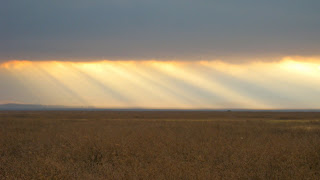Back to day 4 of my backpacking trip: Kisumu (point C, here), smaller than Nairobi, resides in the region where Barack Obama, Sr. grew up. Our bus left an hour late from Nairobi, but I was still able to arrive to Kisumu around 5pm – before dark. After I checked into the Sooper Hotel, I knew what I had to do: see the infamous great lake – the purpose of my entire trip. Fortunately, the hotel had a terrace at its roof. 38 steps later I was there – at least at one of its many bays.
I made it.
The lake and I needed to get more closely acquainted, so I immediately left the hotel and walked down Oginga Odinga road toward its end, where I found a shore-side car wash, a few fish restaurants, and the water of a lake fit for a queen – Queen Victoria. As I stood between the truck and the sedan and rinsed off my shoes with the murky water, this Great Lakes man had finally encountered the “other” great lake before the sun went down.
Tomorrow, during my less than 20-hour stay in Kisumu, I hope to take a boat tour of the lake before boarding a 12:30 bus to Kampala, Uganda. I also will be north of the Equator for the first time since June!
That initial view of the lake – one of many, hopefully – made my trip worthwhile. I can go home happy.





















































